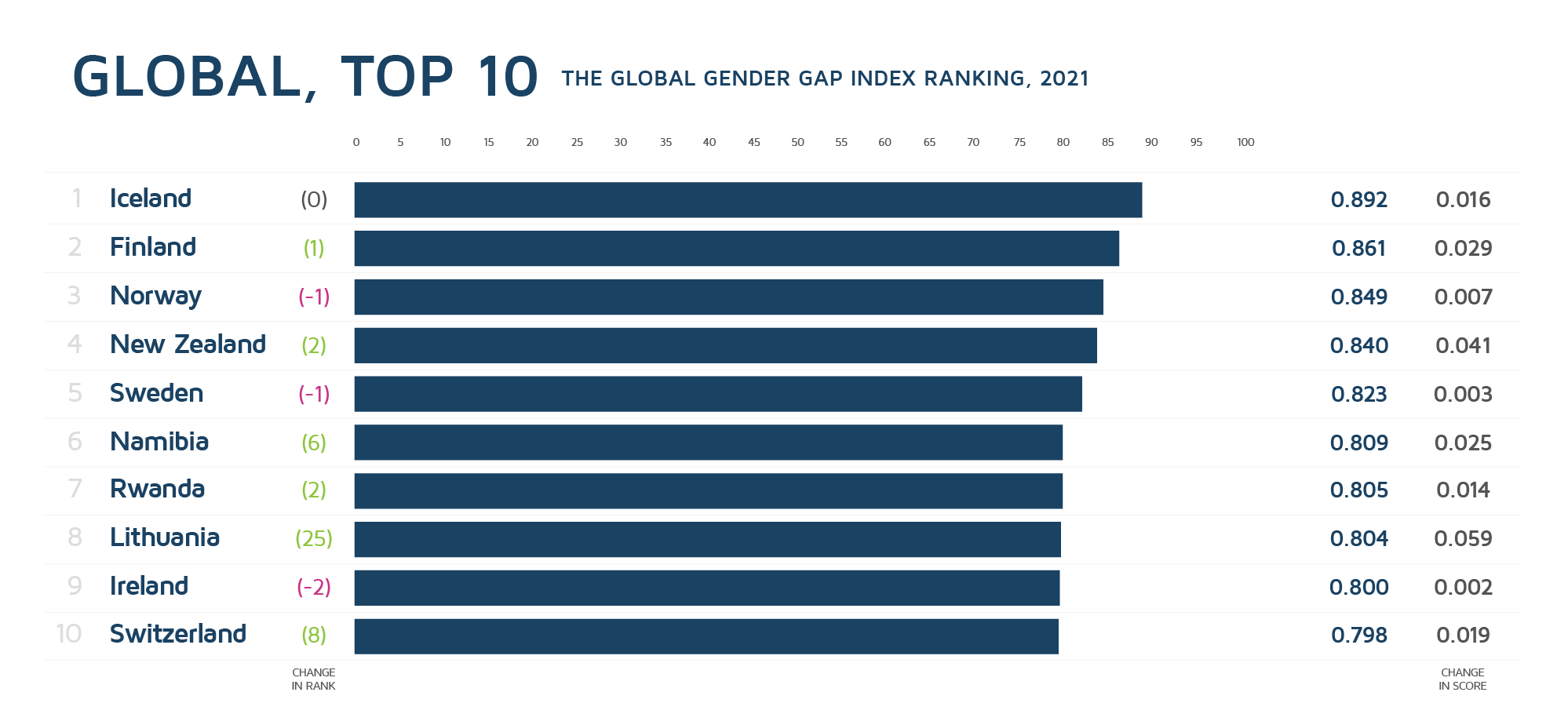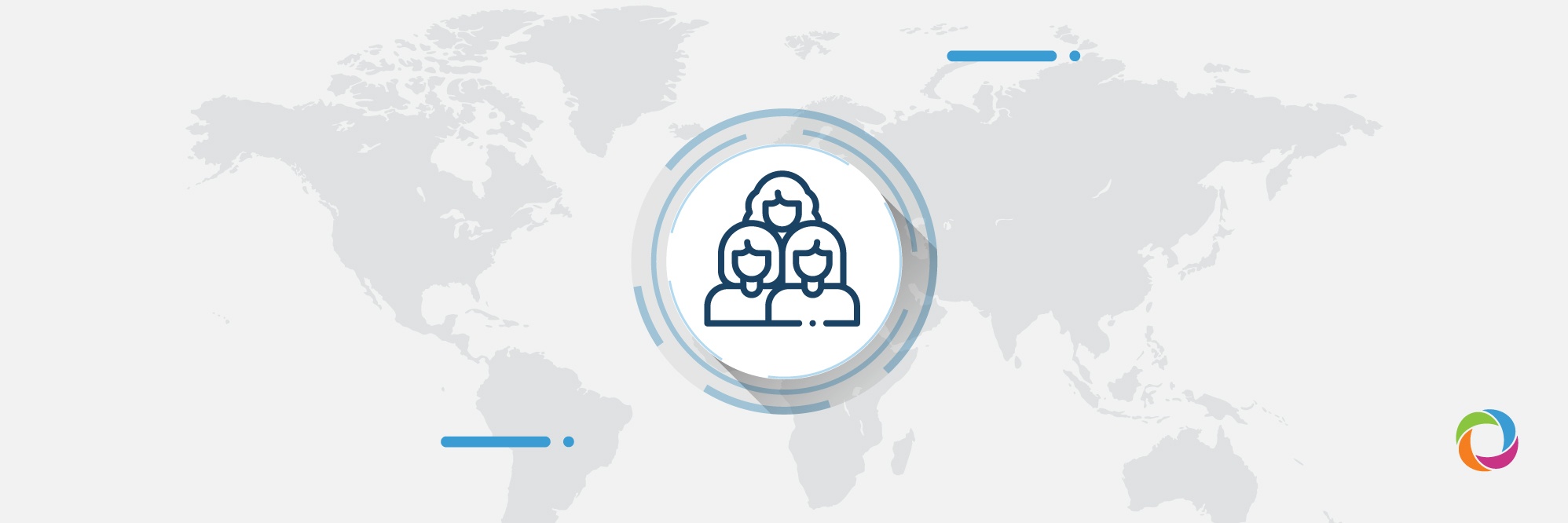The times scale needed to close the gender equality gap has increased by 36 years in just 12 months according to the 2021 Global Gender Gap Report unveiled by the World Economic Forum (WEF). While the 2020 report showed that 99.5 years were needed to do away with gender disparities, the 2021 report now puts this figure at an average of 135.6 years. The regress, which is believed to have been triggered by the impact of the COVID-19 pandemic on women, is the first registered since the earliest issue of the report in 2006.
Covering data from 156 countries, the Global Gender Gap Report follows gender-related progress over time among four key dimensions: Economic Participation and Opportunity, Educational Attainment, Health and Survival, and Political Empowerment.
Key findings of the Global Gender Gap Report 2021
The largest gender-related gap has been recorded in Political Empowerment with only 22% having been closed so far. As women around the world currently hold 26.1% of parliamentary seats and 22.6% of ministerial positions, 145.5 years will be needed to close the gender gap compared to 95 years predicted in the 2020 report. However, it is noteworthy that the increase of the gap within this dimension happened due to negative trends in certain large countries which in contrast offset evolution in another 98 smaller states, the report reveals.
The gender gap in Economic Participation and Opportunity has recorded a tiny improvement of 0.2% compared to the 2020 report, amounting to 58% of the gap being closed. At this pace, it is estimated it will take another 267.6 years to close. Moreover, the situation may be even worse as the report’s authors point out that due to a shortage of data the 2021 edition does not fully reflect the impact of the pandemic.
Education Attainment and Health and Survival are the areas that have registered significant progress over the years in terms of closing the gap with as many as 37 countries having already reached gender equality when it comes to education attainment, the report showed. Nevertheless, one can hardly speak of recent progress in these areas from 2020, when the gender gap was closed at 96.1% and 95.7% respectively, to 2021 when these figures stood at 95% and 96%.
Commenting on the existing situation, WEF managing director, Saadia Zahidi, noted: “The COVID-19 pandemic has raised new barriers to building inclusive and prosperous economies and societies. Pre-existing gender gaps have amplified the crisis asymmetrically between men and women, even as women have been at the frontlines of managing the crisis as essential workers.”
Gender Gap Ranking
The Global Gender Gap Index Ranking assessed all 156 countries with Iceland being recognized as the most gender-parity country for the 12th time. Geographically, the list of the top 10 gender-equal countries is dominated by Nordic countries with Iceland, Norway, Finland, and Sweden being in the top five. The top 10 countries according to the global ranking are as follows:

Overall, in 2021 the five most improved countries are Lithuania, Serbia, Timor-Leste, Togo, and the United Arab Emirates which have reduced the gender gap by a minimum of 4.4 percentage points or more.
The report also captured noteworthy disparities across and within several geographies with Western Europe still being the region progressing the most towards gender equality and being expected to attain this within 53 years. It is followed by North America with about 62 years and Latin America and the Caribbean with 69 years. South Asia, which needs 195 years to close the gender gap, will take the longest.

